Dezeen Awards China architecture project of the year "opens up new possibilities"
A school with colourful volumes and sinuous curves by Trace Architecture Office won Dezeen Awards China 2023 Architecture project of the year, as seen in this movie produced by Dezeen.
The studio picked up the prize, which was sponsored by The Dalmore and V&A Dundee, at the inaugural Dezeen Awards China 2023 party earlier this week. The project was also named civic project of the year.
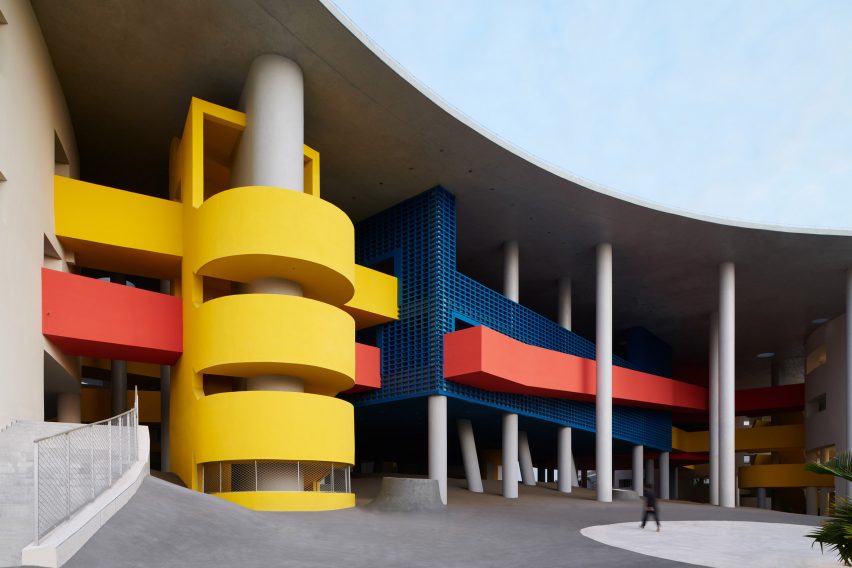
Called Haikou Jiangdong Huandao Experimental School, the development spans 60,000 square metres and comprises a high school, a student dormitory and a kindergarten.
Located in the coastal city of Haikou on the island of Hainan, the school sits on a sloped site and consists of a series of intersecting curved volumes and rectilinear forms. These structures are brightly coloured with vibrant hues to pique the interest and playful curiosity of students.
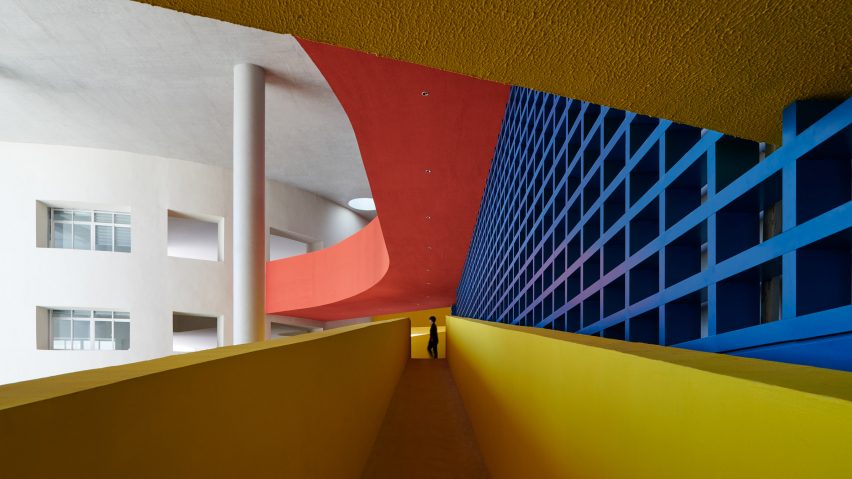
Envisioned as "a miniature pastoral city", the architects aimed to create a campus that stimulates creativity and interaction, departing from conventional exam-oriented learning cultures.
"School design should go beyond functionality," founder and lead architect Hua Li said in the video. "What's more important is that the space should evoke students' imagination."
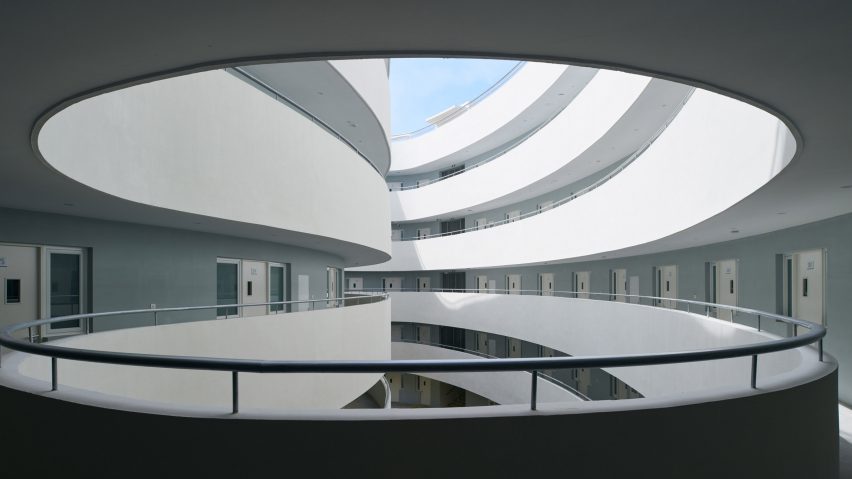
The architects took cues from the site's natural surroundings, which included fields, wetlands, mangrove nature reserves and the ocean, resulting in its organic and winding forms.
It features sweeping curves that mimic meandering rivers and converge like lakes to create centripetal courtyards between buildings, as well as an undulating terrain that forms hills to host events.
Towering pillars standing at 17 metres high were incorporated to create a landscape reminiscent of forests, while the expansive roof takes on the appearance of floating clouds. Both the pillars and roof were constructed from fair-faced concrete.
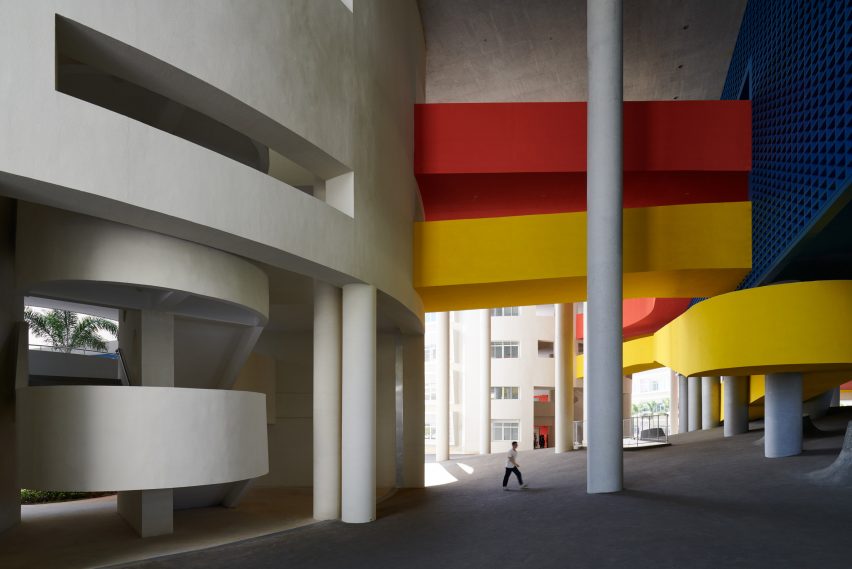
The school was constructed with a radial plane, where the buildings sprawl outward from a central point, which the architects likened to "a pool of water unfolding and spreading."
The intersecting exterior and interior spaces and intertwining pathways create a maze-like environment, offering teachers and students a more exploratory and rich spatial experience.
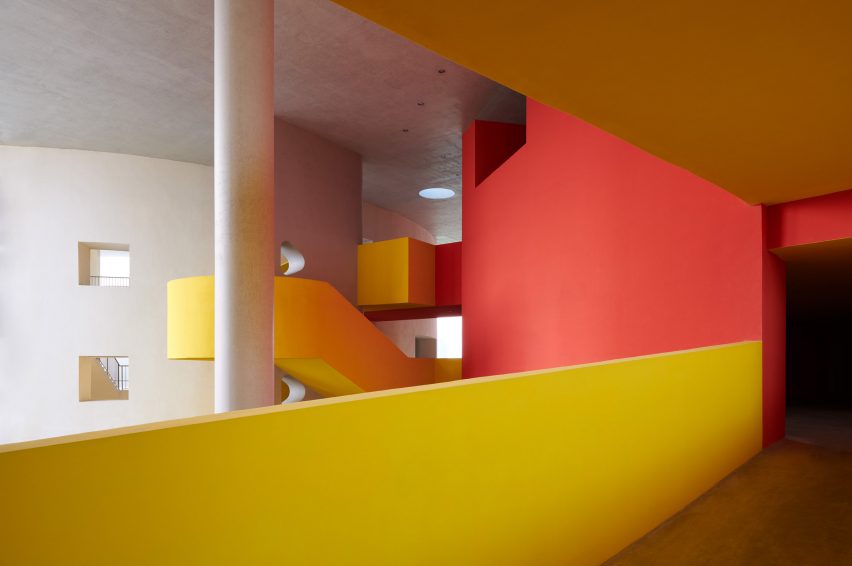
Despite the seemingly irregular structures, the architectural form was guided by precise geometric lines tightly linked to the overall functional layout.
The layout creates a sense of symmetry and allows for efficient zoning and spatial connectivity, which, in turn, shortens distances and improves accessibility throughout the development.
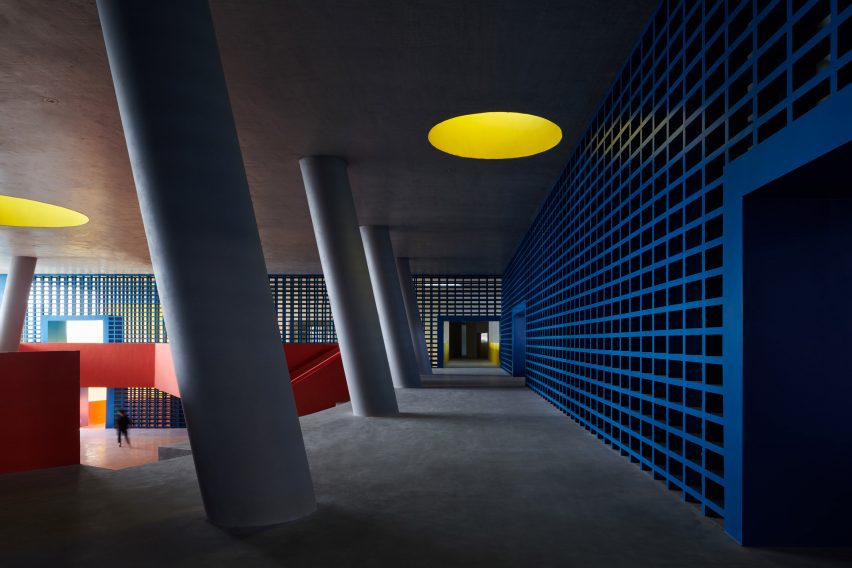
"The project's spatial variety provides a fun and open forum for learning while promoting social interconnectivity among the community," the judges said.
"It breaks away from the traditional rigidity of the educational institutional typology in China and opens up new possibilities for the future."
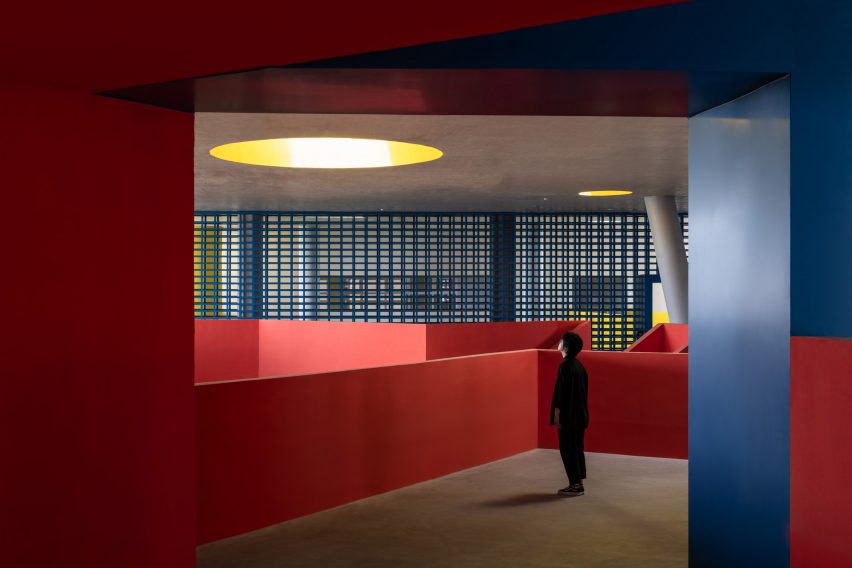
In response to the city's subtropical climate, the campus features raised walkways, cantilevered volumes and angled pillars that create several partially covered outdoor spaces, offering respite during challenging weather spells while enabling children to play outdoors.
These semi-outdoor areas serve multiple purposes by offering shade, ventilation and shelter. The building's eaves provide ample activity zones for children to play beneath, which could also double as informal learning spaces.
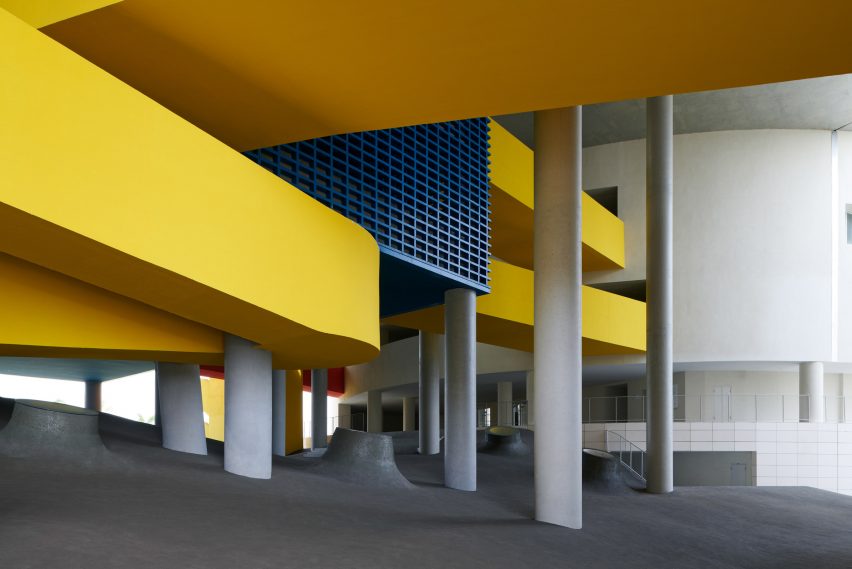
To adapt to Haikou's strong sunlight, the architects employed different sunshade designs for each building facade, based on its orientation.
The south side of the campus incorporates a curtain wall system with a combination of horizontal white aluminium panels and vertical aluminium veneers with a wood grain finish, while the west-facing sections feature more tightly spaced vertical shades that are strategically optimised for the sun's incident direction during the summer solstice.
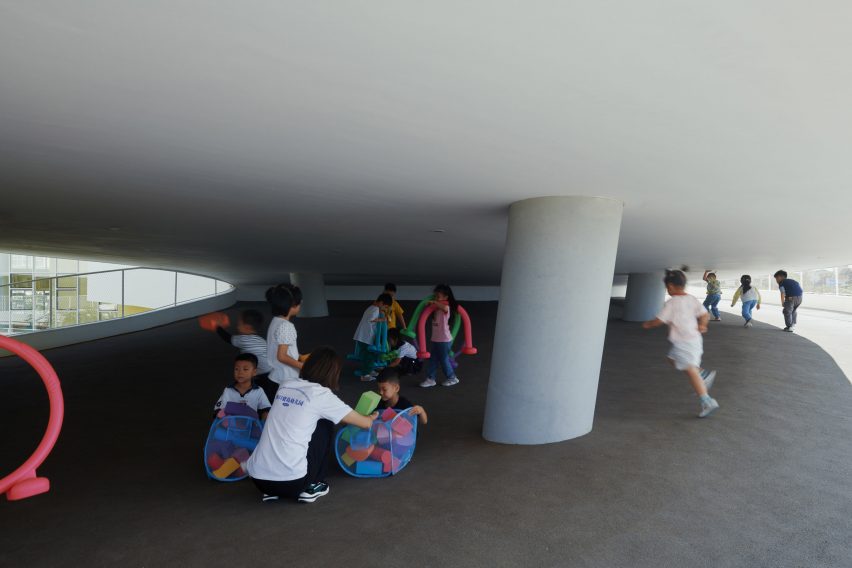
The careful consideration for the sunshade orientation and density is intended to contribute to improved energy efficiency, better control of interior lighting conditions and enhance the overall comfort of occupants during different times of the day and seasons.
"Winning the Architecture project of the year serves as a significant motivation for us," Li said. "We aim to explore different experimental forms in every project."
"We believe that this award will inspire us to continue to do so in the future," he continued.
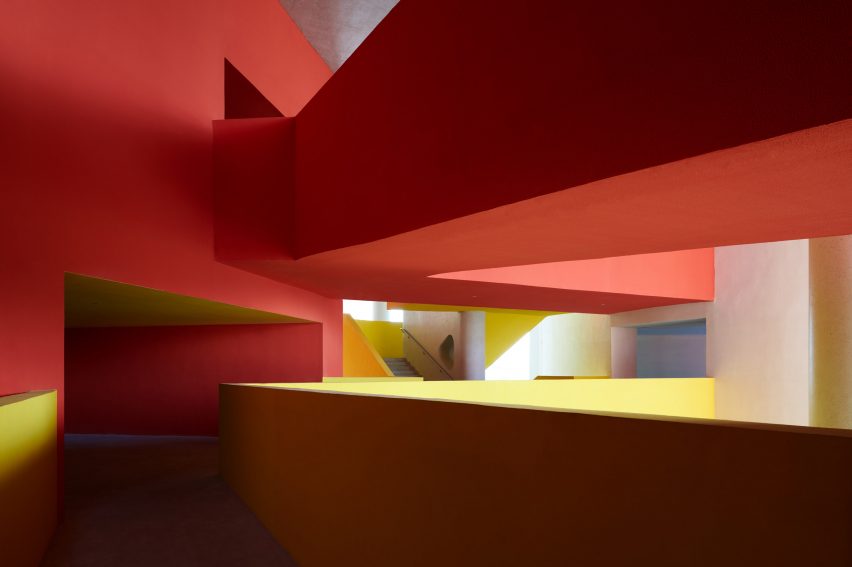
Haikou Jiangdong Huandao Experimental School was up against six other architecture project winners to win the overall architecture project of the year award.
Entries were scored by a jury comprising German architect Ole Scheeren, MAD founder Ma Yansong, Neri&Hu co-founder Rossana Hu, UNStudio director Garett Hwang and Wutopia Lab's Yu Ting.
Launched this year, Dezeen Awards China shines a spotlight on the best Chinese architecture, interiors and design, providing international recognition from around the globe.
The photography is by Chen Hao.
Dezeen Awards China 2023
Dezeen Awards China is the first regional edition of Dezeen Awards, to celebrate the best architecture, interiors and design in China. The annual awards are in partnership with Bentley Motors, as part of a wider collaboration that will see the brand work with Dezeen to support and inspire the next generation of design talent.